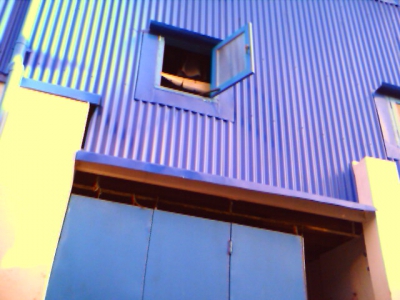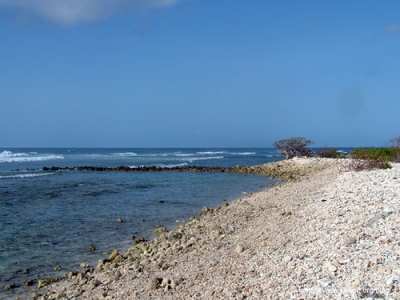Tuesday, August 28. 2007
Maldives: Hell for expatriate workers?
I've watched for the past several years while the expatriate worker population in the Male' grew steadily as the "rich" Maldivians increasingly give up various jobs (going lazy?) and replaced it with imported labour from nearby countries. We have 100-US$-per-month foreign workers to dig up and pave roads, to clean up and maintain the sewerage system, to construct and maintain our buildings, to clean up the mess at home and office, to work as waiters and cooks at food outlets etc. The list goes on and it's not restricted to any particular sort of work or speciality. Heck, even the President's Office employs expats to clean up and water the plants that surround the building. No wonder we now have over 35,000 expatriate workers living amongst the 100,000 Maldivian heads in the 2 square kilometre island of Male'!
Sadly, the presence of such large numbers of expat works in our small communities has lead to a worrying situation on ground. One needs to look no further than the latest news headlines:
- Attacks against expatriates almost a daily occurrence
- Chained Bangladeshi man found inside Male house (see photo)
- Another shackled Bangladeshi expatriate found inside Male’ house
- Ten Maldivians arrested in Adhaaran resort after fight breaks out between locals, Bangladeshi man
- Bangladeshi murdered and mutilated 2 3
- Expatriate security guard in Villi-Male’ ATM booth attacked
- Teacher caught red-handed molesting 8-year-old
- Expatriate worker beat up after being suspected of raping island girl (in Dhivehi)
We (supposedly) once were a tolerant country, welcoming all sorts of people and treated them with due respect. But things have changed and for the worse. Notions of equality and humanity has been devalued to such an extent that xenophobia seems almost universal in the country and racism is building up like never before. As such, mistreatment of and disrespect for expats is a truth many are well aware of. People often treat the many unskilled/semi-skilled workers as "subhuman". I might be tempted to go as far as summarising the prevalent attitude as being a combination of viewing workers as non-tiring machines, incapable and devoid of emotion and feelings and their lives worth no more than a pet cat! They are given accommodation in tiny enclosures made of tin roofing and little ventilation with more workers packed into such places than sardines in a box. They are harassed on the streets and harassed at work. Too many a time do you see workers beg and cry themselves wet over salaries unpaid. Sometimes months would go by without the employer paying the workers their full wage (if at all!) - which the workers often send to their starving families back in their home country. Few regulations keep employers in check - facilitating them to overwork their employers through day and night and give little consideration to the health and safety of the employees. What more, when their "official" work ends, the workers are often made run personal errands and chores for their employer - they really are slaves to the whims and desires of their "master". I was shocked to find the word "owner" used in the popular local newspaper Haveeru, in reference to the employer of the recently murdered Bangladesh worker in Kulhudhuffushi! (Owner? Isn't that slave mentality??)
Such attitudes towards expat workers are often "justified" on the excuse that they come from societies that treat them even worse. They are deemed as too stupid and too gullible to understand the "modern life" Maldivians enjoy. This attitude is further strengthened thanks to miscommunication arising from expat workers not being able to speak neither Dhivehi nor English. But none, absolutely none, of these warrant sanctioning any of the ill-conditions and abuses expat workers are subjected to. I agree that expat workers do ill and do commit crimes. No one would or should deny that. But even that is not an excuse to not extend them some decency and treat them as humans with equal rights!?
Sadly, the presence of such large numbers of expat works in our small communities has lead to a worrying situation on ground. One needs to look no further than the latest news headlines:
- Attacks against expatriates almost a daily occurrence
- Chained Bangladeshi man found inside Male house (see photo)
- Another shackled Bangladeshi expatriate found inside Male’ house
- Ten Maldivians arrested in Adhaaran resort after fight breaks out between locals, Bangladeshi man
- Bangladeshi murdered and mutilated 2 3
- Expatriate security guard in Villi-Male’ ATM booth attacked
- Teacher caught red-handed molesting 8-year-old
- Expatriate worker beat up after being suspected of raping island girl (in Dhivehi)
We (supposedly) once were a tolerant country, welcoming all sorts of people and treated them with due respect. But things have changed and for the worse. Notions of equality and humanity has been devalued to such an extent that xenophobia seems almost universal in the country and racism is building up like never before. As such, mistreatment of and disrespect for expats is a truth many are well aware of. People often treat the many unskilled/semi-skilled workers as "subhuman". I might be tempted to go as far as summarising the prevalent attitude as being a combination of viewing workers as non-tiring machines, incapable and devoid of emotion and feelings and their lives worth no more than a pet cat! They are given accommodation in tiny enclosures made of tin roofing and little ventilation with more workers packed into such places than sardines in a box. They are harassed on the streets and harassed at work. Too many a time do you see workers beg and cry themselves wet over salaries unpaid. Sometimes months would go by without the employer paying the workers their full wage (if at all!) - which the workers often send to their starving families back in their home country. Few regulations keep employers in check - facilitating them to overwork their employers through day and night and give little consideration to the health and safety of the employees. What more, when their "official" work ends, the workers are often made run personal errands and chores for their employer - they really are slaves to the whims and desires of their "master". I was shocked to find the word "owner" used in the popular local newspaper Haveeru, in reference to the employer of the recently murdered Bangladesh worker in Kulhudhuffushi! (Owner? Isn't that slave mentality??)
Such attitudes towards expat workers are often "justified" on the excuse that they come from societies that treat them even worse. They are deemed as too stupid and too gullible to understand the "modern life" Maldivians enjoy. This attitude is further strengthened thanks to miscommunication arising from expat workers not being able to speak neither Dhivehi nor English. But none, absolutely none, of these warrant sanctioning any of the ill-conditions and abuses expat workers are subjected to. I agree that expat workers do ill and do commit crimes. No one would or should deny that. But even that is not an excuse to not extend them some decency and treat them as humans with equal rights!?





